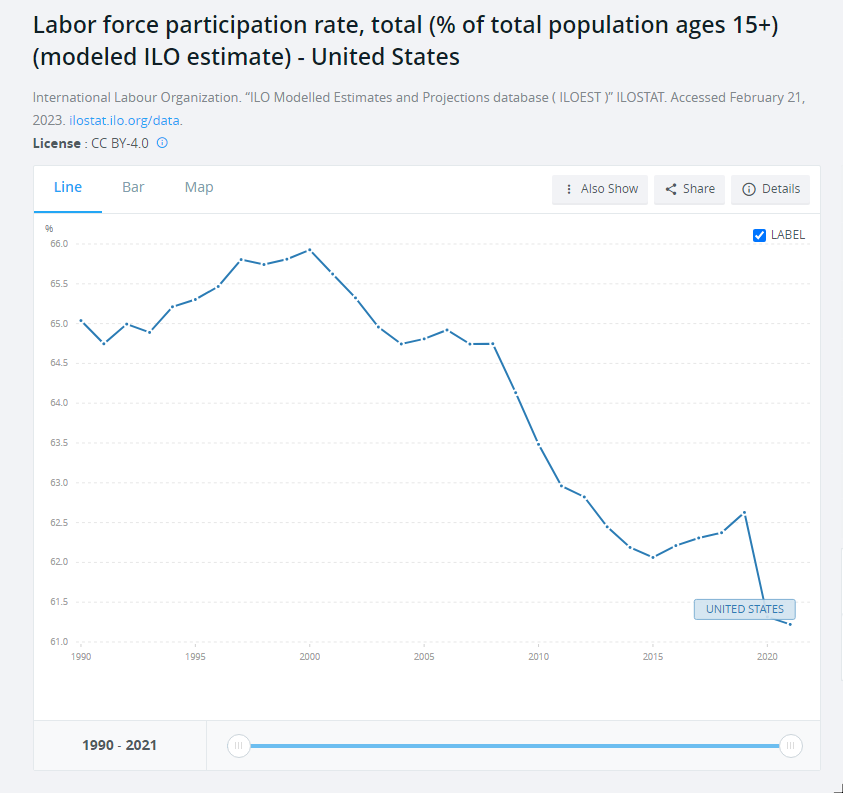Gen Z—the newest generation in our workforce—just doesn’t want to work. How often have you heard that? How often have you heard that? How often have you SAID that? Is that why the labor shortage is getting worse? Is that the cause of the reduction of labor force rate? A recent article in The Business Journals claims that, yes, your business has a Gen Z problem, but it’s not what you think.
SIZE IS A FACTOR
The fact is, Gen Z is a relatively small cohort. There’s only so much they can do to quell a the reasons for labor shortage themselves. Fortune even reports that some Gen Zers are “polyworking” (working multiple jobs), but it’s not enough.
“In the nation’s 100 largest metro areas, the size of Gen Z is about 3.6% smaller than the millennial generation—translating to gaps of at least 10,000 potential employees in 58 of those metros,” write Ty West and Andy Medici of The Business Journals’ The Playbook. “The number of retirements among baby boomers will only grow as all baby boomers will be 65 or older by 2030. By 2034, older adults will outnumber children for the first time in U.S. history.”
“Looking ahead, trends in birth rates will play a large role in the size of the labor force,” adds the Federal Reserve Bank of Kansas City regarding the reasons for labor shortage.
LABOR FORCE PARTICIPATION IS, TOO
It’s not just that fewer people are being born these days; fewer people within the labor force are also choosing to work. This factor affecting the labor shortage is called labor force participation. And, no, that’s not Gen Z’s fault, either.
Since the start of the pandemic, the reduction of labor force participation rate has remained below historical levels. Participation peaked in the 1990s, with about 60% of eligible workers participating, one of the reasons for labor shortage. That makes sense when you think about it: It was common then—some would say even expected—for teens to have jobs and for both parents to work outside the home. The retirement age was rapidly increasing as well. But then, participation began to decline consistently and continued to do so for two decades. The dramatic drop, of course, happened at the start of the pandemic, when 8 million people left the job market.

So, what happened, what are the reasons for labor shortage?
“By the early 2000s, the oldest baby boomers had reached age 55, and lower participation rates among this cohort have since been putting downward pressure on overall labor force participation rates. This downward pressure may have temporarily accelerated during the pandemic, as many baby boomers may have retired earlier than planned,” explains the Federal Reserve Bank of Kansas City. “Even if this temporary rush in retirements leads to fewer retirements over the next couple of years, however, continuing retirements from the baby boom generation are likely to put additional downward pressure and reduction of labor force participation rates over the next decade.”
OTHER FACTORS
One of the reasons for labor shortage is that workers are also having trouble “bouncing back” from leaving the workforce due to factors like dependent care issues and COVID fears. A disproportionate number of these workers are women. By November 2022, 35% of women who became unemployed during the pandemic hadn’t returned to the workforce despite the labor shortage. Three in 10 say they don’t know when they’ll be able to get back to work.
Most sources we found on this topic of a continued reasons for labor shortage mentioned the effect of decreased immigration, as well.
“In the past, worker mobility and immigration helped even out differences as wealthy countries attracted skilled and unskilled workers in search of better pay and prospects,” Nela Richardson, chief economist at ADP, told SHRM. “Now the political winds are shifting on globalization and immigration. Physical mobility might be supplanted by remote work that allows people to stay put while their jobs migrate. The impact of this new dynamic on wages is uncertain and could determine how tight the global talent market will remain in the future.”
WHAT YOU CAN DO
If the reasons for labor shortage and the reduction of labor force rate could be chalked up to younger workers just not wanting to work, it would be a pretty easy puzzle to solve. Just be a place worth working at (with a great culture and benefits), and you’ll be fine.
But it’s not that easy.
Some geographic locations (like Austin) are weathering the storm better than others because they’re attracting an influx of new workers. Some industries also do better than others. But with baby boomer retirements finalizing and no additional workforce numbers coming, every employer is feeling the pain of the labor shortage and will for quite some time. Learn the reasons for labor shortage. If you haven’t rethought your hiring and retention strategies to meet this new reality, it’s definitely time.




